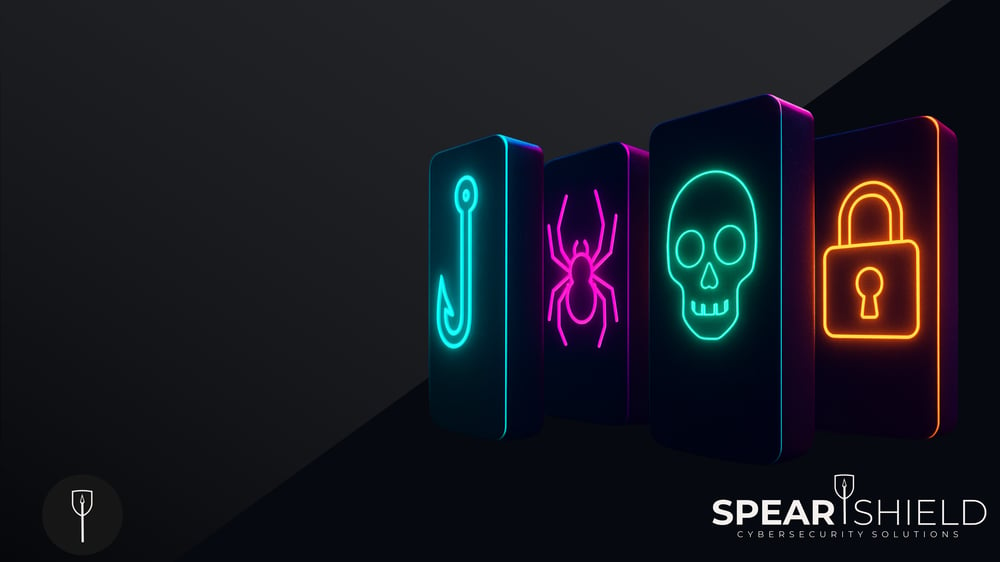The New Norm: Multi-Staged Cyber Attacks and need for Defence in Depth
Ransomware SecOps Threat Intelligence 24/7 MDR 25-Jun-2025 12:18:57 Max Harper 5 min read

Cyber attacks are no longer smash-and-grab.
Today’s threat actors are methodical, patient, and increasingly stealthy. They’re combining multiple tactics across a sequence of steps - phishing, credential harvesting, lateral movement, and data theft - often using your own tools and systems against you.
Welcome to the era of the multi-staged, living-off-the-land cyber attack.
Why Traditional Defences No Longer Cut It
Legacy security strategies focused on blocking the perimeter - but modern attacks assume someone will click, something will be missed, and access will be gained.
And when attackers do get in, they don’t always bring their own tools.
Instead, they’ll use trusted system tools, remote access software, and admin utilities already on your network to move around undetected. This approach is known as a Living off the Land (LotL) attack - and it’s one of the hardest to detect.
Examples include:
-
Using PowerShell to run malicious scripts.
-
Leveraging PsExec to execute remote commands.
-
Abusing RDP, WMI, or remote management software already installed.
No malware. No alerts. Just your own infrastructure turned against you.
Understanding Multi-Staged Attack Chains
A typical multi-staged attack might look like this:
1. Initial Compromise – Often via a phishing email or social engineering.
2. Persistence – Establishing a foothold through credential theft or backdoors.
3. Privilege Escalation – Gaining admin-level access.
4. Lateral Movement – Quietly exploring your network and harvesting data.
5. Data Exfiltration or Encryption – Uploading stolen data or launching ransomware.
6. Extortion – Demanding payment, often under the threat of public exposure.
At every stage, attackers may blend in with normal system activity - making it difficult for traditional defences to respond in time.
Defence in Depth: Why Layered Security Is the Only Way Forward
Defence in Depth is about creating multiple, interlocking layers of protection that detect, disrupt, and respond at every stage of an attack. It’s not about buying more tools - it’s about making sure the right controls are working together.
Spear Shield’s approach includes:
-
Email Security & Behavioural AI – Block phishing, BEC, and malware before they land.
-
Web Security (Secure Web Gateway/CASB) – If a phishing email gets through and a user clicks the link, web security stops them reaching the credential harvesting page.
-
Managed Detection & Response (MDR) – 24/7 monitoring by expert threat hunters. Looking for suspicious behaviours that could indicate signs of an account takeover.
-
Patch & Vulnerability Management – Close known security holes before they’re exploited.
-
Identity & Access Management – Restrict who can access what, from where, and when.
-
User Awareness Training – Reduce human error through education and simulation.
-
SIEM & SOAR – Centralise logs, automate responses, increase visibility, and investigate faster.
-
Backup & Recovery – Ensure critical data and systems can be quickly restored after ransomware, accidental deletion, or targeted destruction.
Each layer supports the next - so even if a threat slips through, another control stands ready. It’s how we minimise blast radius, reduce response time, and improve resilience.
Free Security Posture Assessment
You can’t defend what you can’t see.
That’s why we offer a free Security Posture Assessment. We’ll help you map your current protection layers, identify areas of risk, and prioritise the steps to strengthen your security posture - without the jargon.
Want to learn more?
Book a call with our team or drop us a message today.
📩 hello@spearshield.co.uk
📞 01473 948980
🌐 www.spearshield.co.uk

Max Harper
As CEO and Co-Founder of Spear Shield, Max Harper is focused on building one of the most cyber-secure client communities across Suffolk, East Anglia, and the UK. He works closely with business leaders and IT teams to understand what really drives their organisations – then helps them challenge traditional cybersecurity approaches, rethink their risk strategies, and implement solutions that actually make a difference without impacting user productivity. Max’s goal is to ensure customers can articulate risk confidently, demonstrate value internally, and exceed their cybersecurity goals – with a trusted partner by their side.